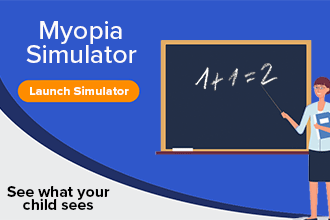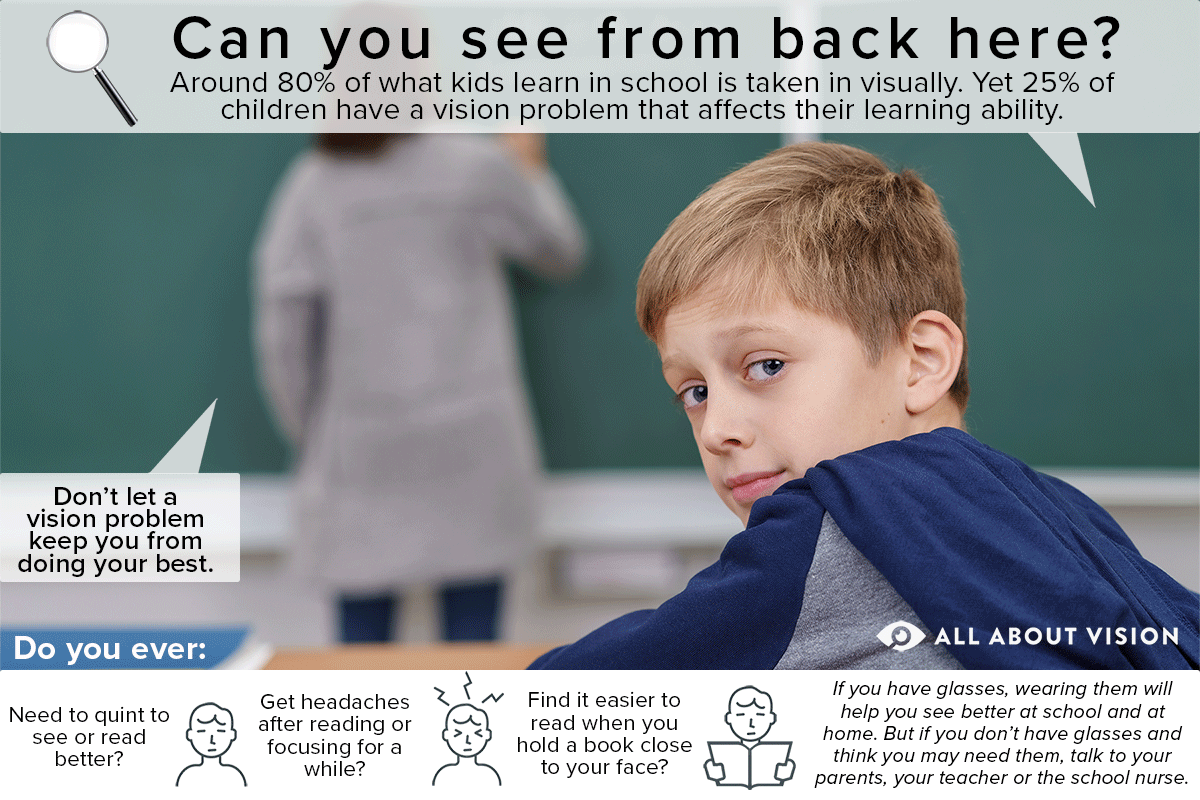Nearsightedness symptoms

The symptoms of nearsightedness (myopia) are some of the easiest to recognize among common eye problems in adults. As the name suggests, nearsighted people can see nearby objects relatively clearly, but strain to see things that are farther away.
Nearsightedness symptoms can include:
Blurry vision when looking at objects that are farther away
Squinting to see clearly
Headaches (a result of eye strain)
Difficulty driving
Nearsightedness is an increasingly common problem. More than four out of every 10 people in America are now nearsighted, according to the National Institutes of Health (NIH).
Download a printable checklist of myopia signs and symptoms HERE.
SEE RELATED: What causes nearsightedness?
Nearsightedness symptoms in children
Nearsightedness often begins in childhood, and it’s important to have it diagnosed as early as possible. In addition to prescription eyeglasses, an eye doctor can suggest a treatment plan to minimize the risk of high myopia later in life.
It can be harder for children to recognize that something is wrong with their eyesight, so myopia symptoms in children are slightly different than the symptoms in adults.
Parents should be mindful of nearsightedness symptoms like:
Excessive blinking
Eye rubbing
Frequent squinting
Sitting closer to objects like TV screens or classroom boards
Being less aware (or completely unaware) of distant objects
Children who are nearsighted should have regular eye exams to help maintain healthy vision during their school years. Myopia generally stabilizes sometime before age 20, but it can continue to progress in early adulthood.
When to see an eye doctor
Mild nearsightedness usually doesn’t pose a direct risk to eye health, but progressive myopia can. When a child’s myopia worsens with age, it can eventually increase their risk of developing sight-threatening conditions later in life.
Early diagnosis and treatment of nearsightedness can minimize their chances of developing these problems. Make sure to schedule an eye exam if your child is showing any of the symptoms of myopia.
In adults, nearsightedness symptoms can usually be corrected with prescription eyeglasses or contact lenses. These corrective lenses require a vision prescription, which an eye doctor will provide after a comprehensive eye exam.
Once myopia stabilizes, optional procedures such as LASIK and PRK may be able to permanently correct nearsightedness and its symptoms.
READ MORE: Can myopia lead to blindness?
Page published on Wednesday, January 20, 2021








